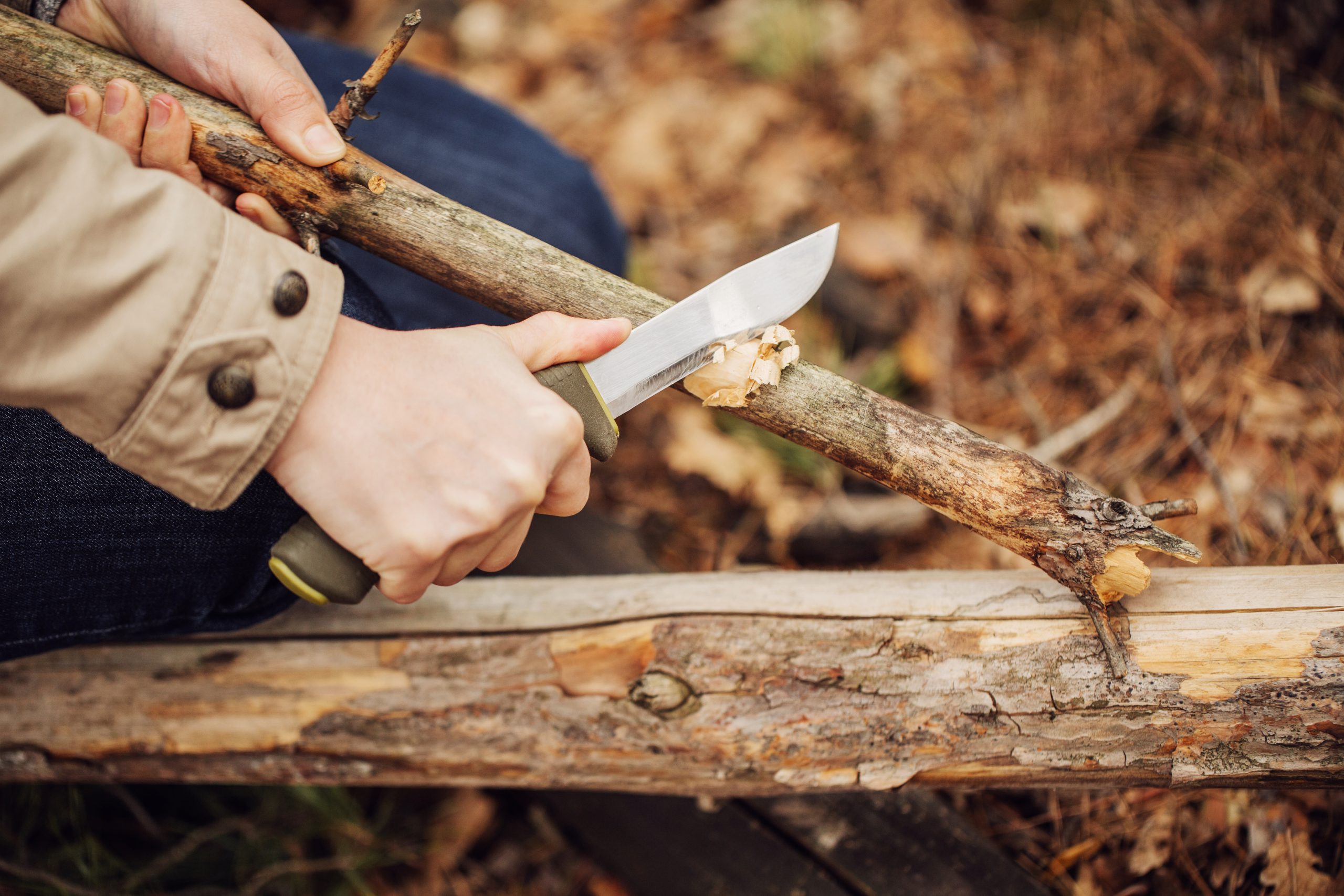Last Updated on October 17, 2022 by admin_hunter
You should never go into the great outdoors without a survival knife. That is the bottom line. However, how do you choose the right one? In this article, we’re going to go through the important features and what you should be looking for when you go shopping.
Survival Knives – The Most Important Features
Survival knives are handy for everything from self-defense and dealing with small wounds to lighting a signal fire and gutting fish to fill your belly. However, there are a few important features you need to pay attention to. There are 7 important points you want to look for.
Knife Tang
The first thing to look for in a survival knife is the tang. The tang refers to how much of the blade goes down into the handle. For example, a full tang survival knife is one where the metal of the blade goes all the way down into the handle. This is very important because a full tang knife is going to be a strong and solid knife, one where the handle and the blade are more or less one piece.
There are cheaper knives where the blade is only attached to the top of the handle, which is less than ideal because the blade may break and snap right off the handle depending on what you are doing with it, so you definitely want to go for a full tang survival knife.
Blade Material
The next thing which is very important to look for in a good survival knife is what the blade is made out of. Generally speaking, there are two types of materials used for survival knives. These include carbon steel and stainless steel. Both of these have their advantages.
On one hand, stainless steel is extremely tough, nearly indestructible. It won’t rust anytime soon, and chipping is nearly impossible. They can take a real beating, but the edge of the blade does not stay sharp for all that long before it needs to be sharpened.
On the other hand, carbon steel is a bit better in terms of edge retention, so you do not have to sharpen it as much. However, the downside to carbon steel is that it might rust, and fairly quickly at that.
The Knife Handle
Another thing to look for in a survival knife is the handle. It’s important because this is what you are holding. In terms of materials, some are made of rubber, which is a bit softer and more comfortable to hold, plus they tend to provide a really good grip, but they tend not to be the most durable. On the other hand, there are handles made of polymers or plastics, which are durable, but not always that comfortable to hold. Some survival knives even come with wooden handles, which quite honestly is not recommended.
Another thing to consider is that many survival knives come with hollow handles for storing items such as matches. This might sound useful at first, but all this accomplishes is weakening the handle and creating an imbalance between the handle and the blade. Moreover, if you happen to put a lighter or matches in the handle, and lose the knife, well you have just lost the knife and your means of making a fire.
Blade Length and Width
Something else that you need to pay attention to when shopping for a survival knife is how long the blade is. Most survival knives will have blades between 6 and 12 inches in length. When it comes to a recommendation, we would go with a blade that is 8 or 9 inches in length.
If you have a survival knife with a blade that is too short, you might not have enough blade to accomplish tasks such as chopping or breaking apart wood. However, if you have a blade that is much longer, say over 10 inches, it starts to become difficult to maneuver. It might be too heavy or too long to use effectively.
In terms of the blade width, something like 4/16 of an inch will do. You do not want a survival knife with a thin blade that is flexible, because when you are doing something like chopping wood, a bendy blade will not get you far and may in fact just snap right in half.
Blade Design
When it comes to a good survival knife, the design of the blade is another thing that you need to keep in mind. Here we are referring to either a straight edge blade or a serrated blade. Generally speaking, while serrated blades look cool, they actually don’t have all that many uses, especially for smaller knives, and they are difficult to sharpen; moreover, the teeth may break off. In terms of a good survival knife, a straight-edge blade is the better choice as it has a higher level of functionality, it’s more durable, and easier to sharpen as well.
A Fixed Blade
Another important thing to look for is a fixed blade knife as opposed to a collapsible or folding knife. Folding survival knives are alright if you want something that is very compact; for this is it is good. However, if you are in a bind and time is of the essence, unfolding one of these might cost you everything.
Furthermore, the hinges might break, get rusty, or just stop working. While a fixed blade knife is a bit harder to transport, you can have the blade out at a moment’s notice, and that might just save your life. Be sure to get a good sheath for carrying it while you are not using it.
Conclusion
There you have it — the most important things to keep an eye out for when buying a survival knife. Never go into the great outdoors without one!

